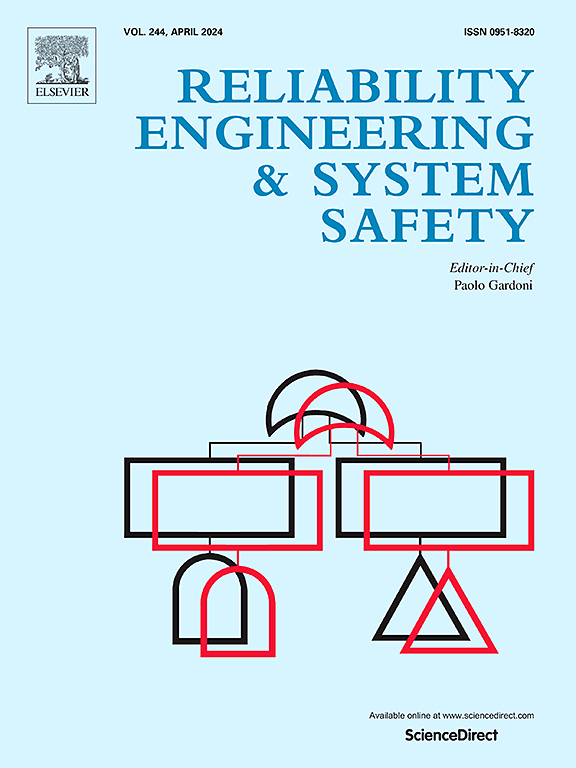Reliability analysis and layout optimization for a multi-component system with thermal coupling
IF 11
1区 工程技术
Q1 ENGINEERING, INDUSTRIAL
引用次数: 0
Abstract
An important feature of power and electronic devices is that their operation is accompanied by the release of heat, which leads to thermal coupling between components, that is, the interaction of temperatures between adjacent components. This phenomenon reflects spatial dependence and is rarely considered in reliability analyses. In this study, a reliability model was proposed for a multi-component system with thermal coupling and was subsequently extended to a competing failure model. Additionally, considering that different components have different workloads, components with higher workloads should be located further away from each other to reduce the probability of high temperatures caused by the simultaneous operation of the components, thus increasing the system’s reliability. Through the innovative use of the minimum energy criterion, we present a layout optimization approach to this issue. Furthermore, the larger the component spacing, the weaker the thermal coupling effect, the higher the system reliability, and the bulkier the system. Therefore, a trade-off must be made. A redundancy allocation problem was studied, that is, minimizing the system volume while considering a given reliability constraint. A numerical example demonstrates the effectiveness of layout optimization in improving reliability and illustrates the application of the proposed methods.
热耦合多部件系统的可靠性分析与布局优化
电力和电子器件的一个重要特征是它们的运行伴随着热量的释放,这导致元件之间的热耦合,即相邻元件之间的温度相互作用。这种现象反映了空间依赖性,在可靠性分析中很少被考虑。在本研究中,提出了一个具有热耦合的多部件系统的可靠性模型,并将其扩展为竞争失效模型。此外,考虑到不同的组件有不同的工作负荷,高工作负荷的组件之间的位置应尽量远离,以减少组件同时工作导致高温的可能性,从而提高系统的可靠性。通过对最小能量准则的创新应用,提出了一种解决这一问题的布局优化方法。元件间距越大,热耦合效应越弱,系统可靠性越高,系统体积越大。因此,必须做出权衡。研究了一个冗余分配问题,即在考虑给定可靠性约束的情况下,使系统体积最小。数值算例表明了布局优化对提高可靠性的有效性,并说明了所提方法的应用。
本文章由计算机程序翻译,如有差异,请以英文原文为准。
求助全文
约1分钟内获得全文
求助全文
来源期刊

Reliability Engineering & System Safety
管理科学-工程:工业
CiteScore
15.20
自引率
39.50%
发文量
621
审稿时长
67 days
期刊介绍:
Elsevier publishes Reliability Engineering & System Safety in association with the European Safety and Reliability Association and the Safety Engineering and Risk Analysis Division. The international journal is devoted to developing and applying methods to enhance the safety and reliability of complex technological systems, like nuclear power plants, chemical plants, hazardous waste facilities, space systems, offshore and maritime systems, transportation systems, constructed infrastructure, and manufacturing plants. The journal normally publishes only articles that involve the analysis of substantive problems related to the reliability of complex systems or present techniques and/or theoretical results that have a discernable relationship to the solution of such problems. An important aim is to balance academic material and practical applications.
 求助内容:
求助内容: 应助结果提醒方式:
应助结果提醒方式:


